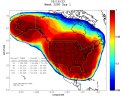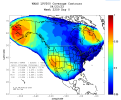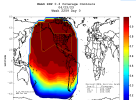jssmith.lh
Pre-Flight
During my IPC today the topic of ceilings and visibility at alternate came up. Precision approach at alternate ceilings must be 600. Non-precision ceilings must be 800.
Given that for a checkride an LPV is counted as a precision approach, how is it counted when selecting an alternate?
Given that for a checkride an LPV is counted as a precision approach, how is it counted when selecting an alternate?





